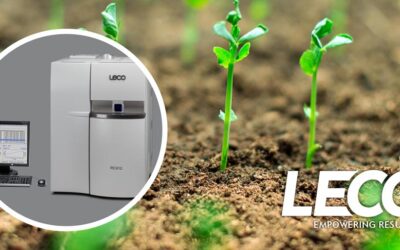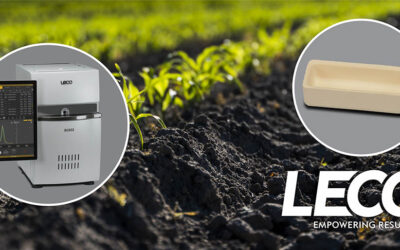We recently had the opportunity to chat with Emeritus Research Scholar Bob Nelson and Senior Scientist Chris Reddy from Woods Hole Oceanographic Institution (WHOI) about their work at the Palos Verdes Mass-Transport Dumpsite. Chris and Bob collected samples and used LECO’s Pegasus® GC-HRT+ 4D to uncover what exactly was spilling out of the hundreds of barrels onto the ocean floor. Read on to see how they answered a few of our toughest questions.

Analytically speaking, what are the greatest challenges that you encountered during this project, and how did you address them?
Bob Nelson: “Oh, yeah. The challenge is, it’s a total unknown. I mean, we had a suspicion that there were pesticides…we like to cast a really broad net, which is why we use the GCGC platforms, because it turns in to be, you know, we did have some targeted compounds, but we also didn’t know what else was in there. So, it’s generally, almost always, it’s a non-targeted approach that we take, because we like to see as much as we can – which is why we run very long, very slow gradients. We use a very long first dimension column, et cetera. So, you know, the challenge is, ‘what the heck is in here, and how do we figure out what’s there?’”
Chris Reddy: “We also didn’t know what was in there in there.”
Bob: “There was medical waste and possibly in some there was—“
Chris: “Radioactive material was found in some of these things. So, you know, there’s a certain sense of uncertainty, you know, you have to make a lot of…you have to be really careful of problems.”
Bob: “Yeah. Are we bringing up explosives?”
Chris: “Yeah, all very possible. I mean, all entirely possible. But we expected to see DDT and those types of chemicals because they were downstream from one of the biggest manufacturers of DDT in the United States, Montrose. But, you know, another one that has happened 1000 times between Bob and me is that, you know, I know Bob’s running the sample and then I wait, you know, like an hour so I don’t annoy him. And then I go, ‘what’s it look like?’
And you know, a watched chromatograph does not separate… we’re looking at it together and you go, ‘there’s a lot more oil in this.’ The DDT gets the top billing, but most of the chemical in those extracts that were analyzed by LECO are petroleum hydrocarbons. It’s just that DDT—Rachel Carson wrote about DDT. She didn’t write about oil. And that’s not surprising since if you’ve ever been on ‘The Five’ in the Los Angeles area, there’s all oil refineries, you know, so, it doesn’t surprise at all. So, that kind of makes sense.”
How were you able to sort though the loads of data presented by the LECO Pegasus HRT 4D and come to conclusions about your samples?
Bob: “Well, we use, in order to find the chlorinated compounds, I use the RDBE versus carbon number apps which are great for any compound that has a heteroatom. Like, anything chlorinated, anything brominated, anything with a nitrogen, anything with a sulfur, et cetera. So, that basically lets you focus right in on that hot area right away, and that was, in the beginning, that was what everybody wanted to see was, ‘what are the chlorinated compounds and how many of them are there, and where are they, et cetera. What do they look like?’
And then, further out, we started looking at other compounds, sulfur-containing, anything with a nitrogen, and on subsequent cruises, we found all these anilines, which, we believe are the starting compounds for the chlorinated pesticides.”
Chris: “So, another reason why the HRT and the accurate mass becomes incredibly powerful in this investigation is exactly what Bob said, which is that these samples were not just carbon and hydrogen. And even chlorine, right? But they had nitrogen and sulfur and oxygen. And when you start building molecules with these, what we call heteroatoms, you end up getting some very interesting compounds that you don’t usually look for. If you had a benchtop GC-MS, you would just have to sit there and get very lucky trying to see if there are any nitrogen containing compounds. You would just be, you would almost have to get lucky in some respects, but the way in which the HRT collects data and the way in which, how each one of those atoms weighs, their unique mass, the information that’s encoded in the HRT allows us to actually say, ‘do any of these things have something that weighs X?’ And if it does, it must have a nitrogen in it. And that’s how Bob was interrogating these samples for these heteroatoms, which are very hard otherwise. Because the data afforded by the HRT had such great resolution and there was so much information encoded in it, that we could interrogate it and ask it for ‘where all the nitrogens? Where are all the oxygens? And where are all the sulfurs?’
And, you know, one thing to keep in mind is that, it’s often just as important—not as much fun—to show that something is not there as is there. And when Bob can look for something and say, ‘I wonder if there’s any of these XXY compounds?’ And if there were, then they should weigh 192.6754, and Bob can put that number in there and scan. And if it’s not in the sample, it’s not there. That is incredibly powerful. So, it’s not just finding with confidence, it’s also showing it’s not there with confidence, and that is where the HRT also excels.
And, I mean, this wasn’t necessarily your question, but that we think—and we don’t think there’s any doubt in it—we’re not industry shills or anything like that. We’re not paid by LECO to do anything. But, we strongly believe that this industry/academic connection, and the fact that we have such fruitful exchanges, you know, that puts us at a competitive advantage with our colleagues.”
Bob: “And we actually consider LECO a colleague.”
Chris: “And I think that’s part of, you know, if you wanted to look at LECO’s special sauce, right, it is that it’s a family business. I mean, you can feel that. It’s undeniable.”
How might the research that you guys are doing with Woods Hole Oceanographic Institution inform other investigations into environmental transformation of pollutants like PFAS or microplastics?
Chris: “Yeah, I mean, we make a significant effort to publish our work. And that matters a lot to us. And we make a significant effort to communicate about our results, whether it’s, you know, seminars like next month, and things like that.
You know, that’s where our job is. We get out there and we tell these stories and we tell them where we think this is important. And you know, we’ve been looking at compounds associated with plastics for years as well. Our job…we don’t look at millions of samples. We look at enough samples for us to tell a story and hopefully help others pave the way for more comprehensive, bigger projects.
You know, we’re not…we’re a small team. But we bang the drum. And our drum is a LECO instrument.”
You’ll be presenting your work in an upcoming webinar with LECO. What can attendees expect to learn from the event?
Chris: “In my mind…they’re gonna get a story, from the beginning to the end, on historical pollution of DDT…We’re telling the crispest, most-resolved story, because of the GC platforms.”
Bob: “I guess, the take home message from us is that there’s always something interesting in the non-targeted analysis. For us, we like to do a more holistic approach, rather than just target a few compounds. So, the take home message is, ‘there’s more than just DDT.’”

You can view the webinar On-Demand at your leisure to learn more about what Chris and Bob discovered and the analytical tools they used. You can also listen to the full interview we had with these two by clicking the play button below! Some other questions they answer include:
- Can you share an example of an unexpected finding that GC×GC revealed in the dumped waste?
- In your opinion, what makes GC×GC pivotal for environmental analyses like this?
- Are there encouraging trends or new strategies emerging for the remediation of persistent organic pollutants in the environment?
Listen in and see what they had to say!




